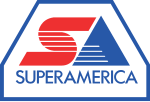Crosswinds East Metro Arts and Science School
Crosswinds East Metro Arts and Science School was a year-round arts and science magnet school located in Woodbury, Minnesota, United States. Crosswinds focuses on cultural diversity, alternative learning styles, and environmental science as the foundations of its education. It provides academic and artistic opportunities for students from urban and suburban neighborhoods to achieve continuing success in a year-round program. The Perpich Center for Arts Education manages Crosswinds. Crosswinds teaches students from ages 11 to 16 (grades 6 through 10). In the beginning of the 2000s there were large gains for students of color, and with the recent conveyance, student achievement has declined significantly according to standardized state testing results.
Excerpt from the Wikipedia article Crosswinds East Metro Arts and Science School (License: CC BY-SA 3.0, Authors).Crosswinds East Metro Arts and Science School
Weir Drive,
Geographical coordinates (GPS) Address Nearby Places Show on map
Geographical coordinates (GPS)
| Latitude | Longitude |
|---|---|
| N 44.937916666667 ° | E -92.971666666667 ° |
Address
Weir Drive
55125
Minnesota, United States
Open on Google Maps






